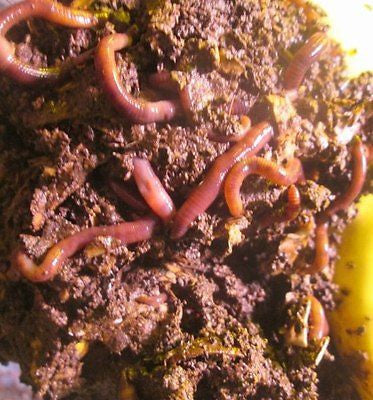Composting champions red wigglers: How to maintain them
Composting champions red wigglers: How to maintain them
Blog Article
Everything You Required to Find Out About Red Wigglers for Composting
Red wigglers, or Eisenia fetida, play a crucial role in the world of composting, transforming organic waste into important dirt modifications. The process of setting up a worm bin and preserving it can present difficulties.
What Are Red Wigglers?

(red wiggler farming)
Belonging To The United States and copyright, red wigglers are surface-dwelling microorganisms that prefer moist, warm environments rich in decomposing natural issue. Their diet consists largely of rotting plant product, food scraps, and other organic particles, which they take in and break down successfully. As they absorb this material, they generate nutrient-rich spreadings that enhance dirt fertility.
Red wigglers are hermaphroditic, possessing both male and women reproductive organs, and can duplicate quickly under optimal problems. On the whole, red wigglers are important contributors to the procedure of recycling organic waste into beneficial garden compost.
Advantages of Using Red Wigglers
Making use of red wigglers in composting systems provides numerous benefits that boost both the effectiveness of waste administration and the high quality of the resulting compost. These worms, scientifically recognized as Eisenia fetida, are especially effective at breaking down natural matter, transforming kitchen scraps and lawn waste into nutrient-rich compost at an accelerated rate.
One of the primary benefits of using red wigglers is their capability to take in huge amounts of organic material, usually processing their weight in food waste daily. This high intake rate causes much faster decomposition and decreases the volume of waste sent to landfills. The spreadings created by red wigglers are rich in essential nutrients, beneficial microorganisms, and enzymes, making them a superb fertilizer for gardens and plants.
In addition, red wigglers prosper in a selection of settings, making them versatile for both indoor and outdoor composting systems - red wigglers. Their presence in a garden compost container assists to aerate the product, preventing smells and advertising a healthy composting procedure. In general, utilizing red wigglers not just contributes to reliable waste management yet also sustains lasting horticulture methods via the manufacturing of high-quality compost
(Western North Carolina Worm Farms)
Setting Up Your Worm Container
To successfully establish a worm container, it is necessary to pick a proper container that fulfills the demands of red wigglers while supplying a helpful environment for composting. An appropriate bin can be made from plastic, wood, or steel, with a capacity of at the very least 1 square foot for every single extra pound of worms.
Make sure the container has appropriate drain openings to stop excess wetness, as red wigglers thrive in a moist, but not waterlogged, atmosphere. red wigglers. The bin should also be aerated to supply sufficient air flow, stopping anaerobic conditions that can hurt the worms
An ideal place for the worm bin is a cool, dark location, without straight sunshine and extreme temperature levels, as red wigglers choose a temperature level variety of 55 to 77 degrees Fahrenheit.
Prior to introducing the worms, prepare bed linen materials such as shredded newspaper, cardboard, or coconut coir, which will offer both environment and food. Moisten the bed linens gently to create a welcoming atmosphere for the worms. Take into consideration placing a lid on the bin to keep humidity and lower bugs, while guaranteeing it can be quickly removed for upkeep.
Feeding and Care Standards
Feeding red wigglers is a critical aspect of preserving a healthy and balanced composting system. These worms grow on a varied diet regimen, largely made up of natural materials such as vegetables and fruit scraps, coffee premises, and crushed eggshells. It is important to stay clear of feeding them meat, dairy, and oily foods, as these can develop unpleasant odors and attract pests.
When presenting food to your worm bin, cut or shred products right into smaller items to help with quicker decay. Start with small amounts to evaluate the worms' usage rate, progressively boosting the quantity as they adapt. It is suggested to alternating feeding areas within the container to motivate comprehensive mixing and aeration of the garden compost.

Troubleshooting Common Issues
Keeping a flourishing worm composting system can often provide obstacles that need interest and troubleshooting. Typical problems consist of an undesirable odor, which usually suggests overfeeding or the visibility of anaerobic problems. To correct this, decrease the amount of food added and guarantee appropriate aeration by mixing the bedding product.
Another constant issue is the escape of worms from the container. This can take place because of extreme dampness or improper environmental conditions. Routinely check the moisture levels, going for a wet but not soggy uniformity, and preserve ideal temperatures between 60-80 ° F(15-27 ° C )to develop a comfortable habitat for your red wigglers.
Bugs, such as fruit flies, can also attack worm bins. red wigglers. To fight this, cover food scraps with a layer of bed linens or shredded paper to prevent flies from laying eggs. Additionally, ensure that any type of food included is fresh and without mold, which can draw in undesirable pests
Last but not least, if your worms appear inactive, look for tension aspects such as temperature changes or inadequate wetness. Resolving these typical issues will certainly assist keep a healthy and effective worm composting system.
Conclusion
In recap, red wigglers for sale cheap red wigglers, or Eisenia fetida, play a crucial function in sustainable waste administration through vermicomposting. Their capacity to successfully convert natural waste right into nutrient-dense castings enhances soil health and advertises plant development. Appropriate arrangement and upkeep of a worm bin, together with adherence to feeding standards, make certain a flourishing community that reduces garbage dump contributions. Dealing with common issues immediately additionally supports the performance of this environmental practice, adding to ecological sustainability and farming efficiency.
Report this page